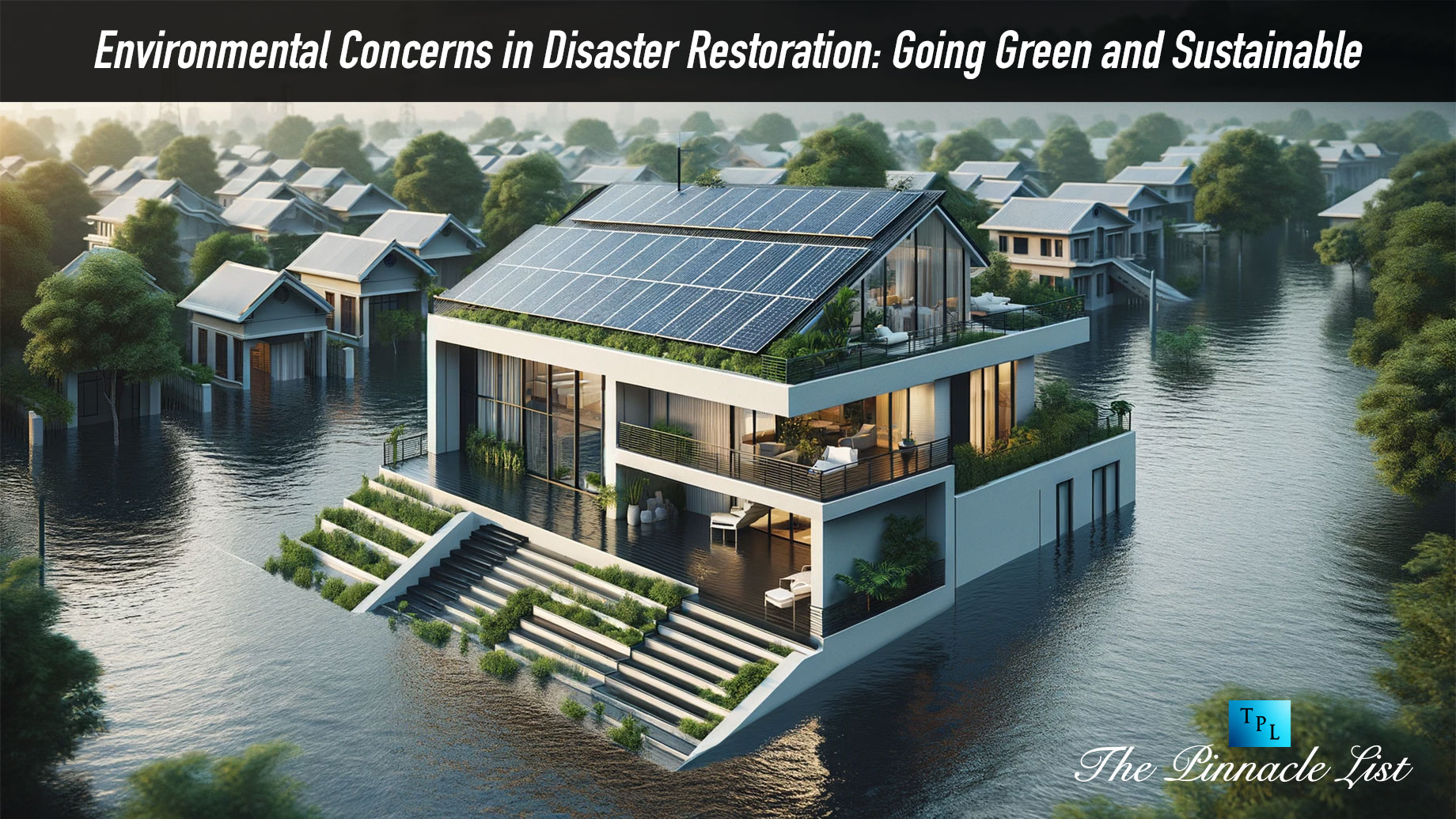
Restoring homes, businesses, and communities to their pre-disaster states is frequently the top priority after a disaster. But with the growing threat of climate change and the accompanying environmental difficulties, it is more crucial than ever to take the ecological effects of disaster restoration efforts into account. In this blog post, we’ll look at the environmental issues surrounding disaster restoration and talk about how crucial it is for the sector to embrace sustainable and green practices.
Why Environmental Issues Are Important for Disaster Recovery
- Resource Conservation: Preserving natural resources is a fundamental aspect of sustainability. Conventional disaster restoration techniques frequently call for the use of substantial amounts of supplies, such as drywall, insulation, lumber, and other materials. Because of manufacturing and transportation, these materials may contribute to deforestation, resource depletion, and increased carbon emissions. Green restoration techniques choose sustainable substitutes and reuse materials wherever possible in an effort to reduce waste and conserve resources.
- Reducing Carbon Footprint: The two main causes of greenhouse gas emissions are energy use and transportation. Equipment, supplies, and personnel must usually be transported to and from the site of disaster restoration projects. Restoration businesses can considerably lower their carbon footprint and contribute to the fight against climate change by implementing energy-efficient procedures and using green technologies.
- Preserving Ecosystems: Natural disasters can significantly impact nearby ecosystems. Hazardous material spills, like those involving chemicals or oil, can contaminate soil and water, endangering plant and animal life. In order to ensure that ecosystems can recover and flourish after a disaster, sustainable restoration practices place a high priority on the preservation and restoration of natural habitats.
- Reducing Hazardous Waste: Conventional restoration techniques have the potential to produce large volumes of hazardous waste, such as asbestos, lead, and other harmful substances. It is imperative that these materials be disposed of properly to stop additional environmental damage. Green restoration techniques put an emphasis on safe and responsible waste management, which includes hazardous material disposal and recycling.
Sustainable and Ecological Restoration Techniques
Now that we know the importance of environmental considerations in disaster restoration, let’s look at some eco-friendly and sustainable methods that restoration experts can use:
- Energy-Efficient Appliances and Equipment: Restoration companies can cut operating expenses by using appliances and equipment that use less energy while also consuming less energy. Energy-efficient automobiles, high-efficiency HVAC systems, and LED lighting are a few examples of this.
- Recycling and Reuse: Restoration specialists should give priority to recycling materials such as plastic, glass, and metal whenever feasible. Furthermore, waste can be considerably decreased by saving and reusing fixtures, furnishings, and building materials.
- Green Building Materials: Choose environmentally friendly and sustainable building materials, such as low-VOC paints, reclaimed wood, and bamboo flooring. These materials improve indoor air quality and have less of an adverse effect on the environment.
- Water Conservation: To cut down on water usage during restoration projects, use water-saving techniques like rainwater harvesting systems and low-flow plumbing fixtures.
- Native Landscaping: Following outdoor restoration, think about introducing native plants that will benefit the local ecosystem by requiring less care and water.
- Education and Training: Consistently teach employees and outside contractors the value of eco-friendly and sustainable practices and offer guidance on how to put them into practice.
Recommendation for Professional Services
It is imperative to seek out disaster restoration companies in Charleston County that are certified or accredited by relevant environmental and sustainability organizations when looking for disaster restoration services that prioritize green and sustainable practices. These certifications frequently signify a dedication to environmentally friendly procedures and conscientious restoration.
Obstacles and Advancements in Eco-Friendly Disaster Recovery
Although there is no denying the advantages of environmentally friendly and sustainable disaster restoration, it is important to recognize the difficulties and creative solutions that come with implementing these methods.
- Initial Costs: The possibility of higher upfront expenses is one of the main worries for restoration companies thinking about implementing green practices. Although sustainable materials and equipment may cost more upfront, they frequently save money over time due to decreased waste and increased energy efficiency.
- Education and Training: Staff and contractors must receive continual education and training in order to make the transition to green and sustainable restoration. To effectively implement eco-friendly practices, professionals must stay up to date on the newest techniques and technologies.
- Technological Developments: New methods and technologies are frequently introduced in the field of sustainable restoration, which is always changing. Remaining current with these innovations is essential for providing excellent services, ranging from energy-efficient drying equipment to environmentally friendly cleaning solutions.
- Collaboration and Certification: Restoration companies can better navigate the complex world of eco-friendly practices by collaborating with environmental agencies, green building councils, and sustainability organizations. A company’s reputation in the industry can also be enhanced by obtaining certifications from these organizations.
- Case Studies and Success Stories: By sharing actual case studies and triumphs in the field of sustainable disaster restoration, one can encourage people to adopt environmentally friendly behaviors. These illustrations show how choosing sustainability has a positive financial and environmental impact.
Conclusion
It becomes morally necessary to use green and sustainable practices for disaster restoration as we face the growing challenges of climate change and environmental degradation. It not only prevents additional damage to the environment, but it also fosters the development of communities that are stronger, safer, and more resilient. The disaster restoration sector can make a substantial contribution to a sustainable future for all by raising awareness of resource conservation, cutting carbon footprints, safeguarding ecosystems, and minimizing hazardous waste.